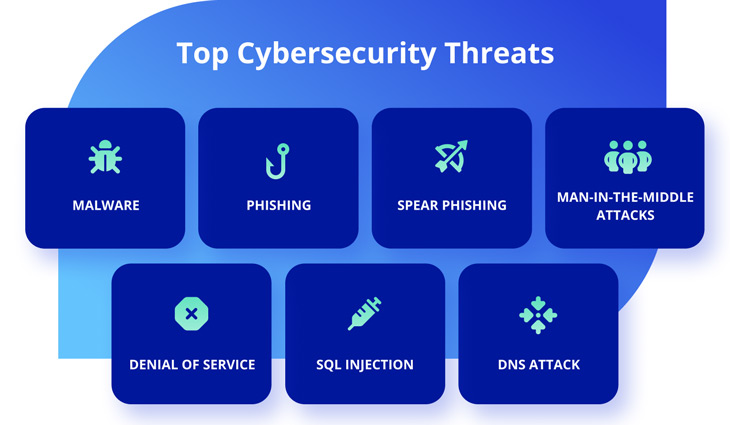What Should You Do Following a Cyber Security Attack?

Cyber attacks can be devastating for businesses. According to Kaspersky, a data breach can cost a small business $101,000 on average.
It’s essential to have a disaster recovery plan in place. This should include steps for responding to a data breach. The first step is to mobilize your cybersecurity team.
Identify the Source of the Attack
Identifying the source of the attack is a critical step in cyber attack recovery. This involves determining how the attack was initiated, what damage it caused and who is responsible for the breach. The attacker can use various methods to evade detection. For example, they may spoof the source of data packets sent over the Internet by changing the information encoded in them. This can make it difficult to trace the attack back to its origin.
In order to pinpoint the attack’s origin, you need to review the logs of your firewall, email service provider, virus scanner and intrusion detection systems. You can also hire a cyber investigator to help you track down the attack’s source and scope. While these experts can be expensive, they are often worth the investment to prevent future attacks and reduce your liability.
If the data breach is serious, it’s important to find out how many customers have been affected. You’ll need to contact them in order to notify them and give them advice about protecting themselves. You should also work with your PR department to draft a press release and determine the appropriate course of action to take.
Having formal communication protocols in place ahead of time is crucial in the aftermath of a cyber security attack. It will help you avoid the common mistakes that lead to an attack, like not deploying antivirus software, not updating operating systems and not changing passwords frequently enough.
Identify the Scope of the Attack
After you’ve determined the source of the cyber attack and have contained it, you need to determine the scope of the damage. This can be done by assessing what information was breached and how it was accessed. This can be difficult and may require a forensic investigation by a third party. This can help you understand what was accessed and how it was accessed so that you can take steps to prevent similar attacks in the future.
This step is also critical for assessing the cost of the attack. It will help you determine how much it will cost to recover from the attack and make any necessary changes. Having these plans in place ahead of time reduces the amount of risk you face and can help you get back on your feet sooner.
Once you’ve determined the extent of the damage, it’s important to start taking action to contain the attack. This may include isolating systems that have been impacted, removing access to user accounts and revoke passwords, and installing security patches on affected computers. This will prevent the hackers from using the systems to launch further attacks and will help return them to a functional, secure state. It’s also a good idea to have backups of the systems so that you can conduct further forensics if needed.
Contain the Attack
After the source of an attack has been identified and the scope of the breach determined, it’s time to contain the attack. This involves disconnecting infected systems from network access (wired, wireless and mobile) and disabling core network connections if necessary. This will help to prevent the attacker from accessing additional systems, devices or information.
Once the attack has been contained, it’s important to re-enable systems and networks that are required for normal business operations. This may include installing security patches, disabling remote access protocols that are too easy for attackers to exploit and resetting passwords to prevent compromised accounts from being used again.
It’s also important to communicate with all staff members, especially if they have been affected by the cyber attack, whether directly or indirectly. Employees and customers should be assured that the company is working hard to make changes and improve security protocols to ensure this type of attack isn’t repeated in the future.
In addition, it’s a good idea to work with your PR team on how the incident will be reported and handled. This will ensure you have the right messaging ready in case a press release is needed to keep the public up to date on the attack and how it’s being addressed. It’s also a good idea to periodically run mock incidents to practice your response plan and ensure it’s up to the task in the event of a real-life attack.
Report the Attack
A cyber attack or data breach is a reality that every business must face. It is therefore important that your company has a solid plan of action in place in case an attack occurs. This should include plans for recovery, strengthening security systems, reporting to authorities and statements for clients. This will ensure that the attack does not take too much from your company.
Once you have figured out the source and scope of the attack, you should work with your IT department to contain it. The aim is to stop the hacker from accessing more sensitive information or spreading malware throughout your network. This will involve shutting down and isolating systems that have been hacked, disabling user accounts that are prone to malware infection or backdoors, etc.
After the attack has been contained, you should do a deep investigation into the incident. Hire a third-party forensics team to help you work out what exactly was compromised and who the perpetrators were. This will also allow you to get a better idea of how the attack happened and change your systems in order to prevent future attacks from happening again.
In the case of a data breach, you will need to notify all of your consumers as soon as possible. This will likely involve a press release, but it is also important to work with your PR department on how to word the statement. In addition, you may need to provide further information on your website or other media sources as the situation develops.







